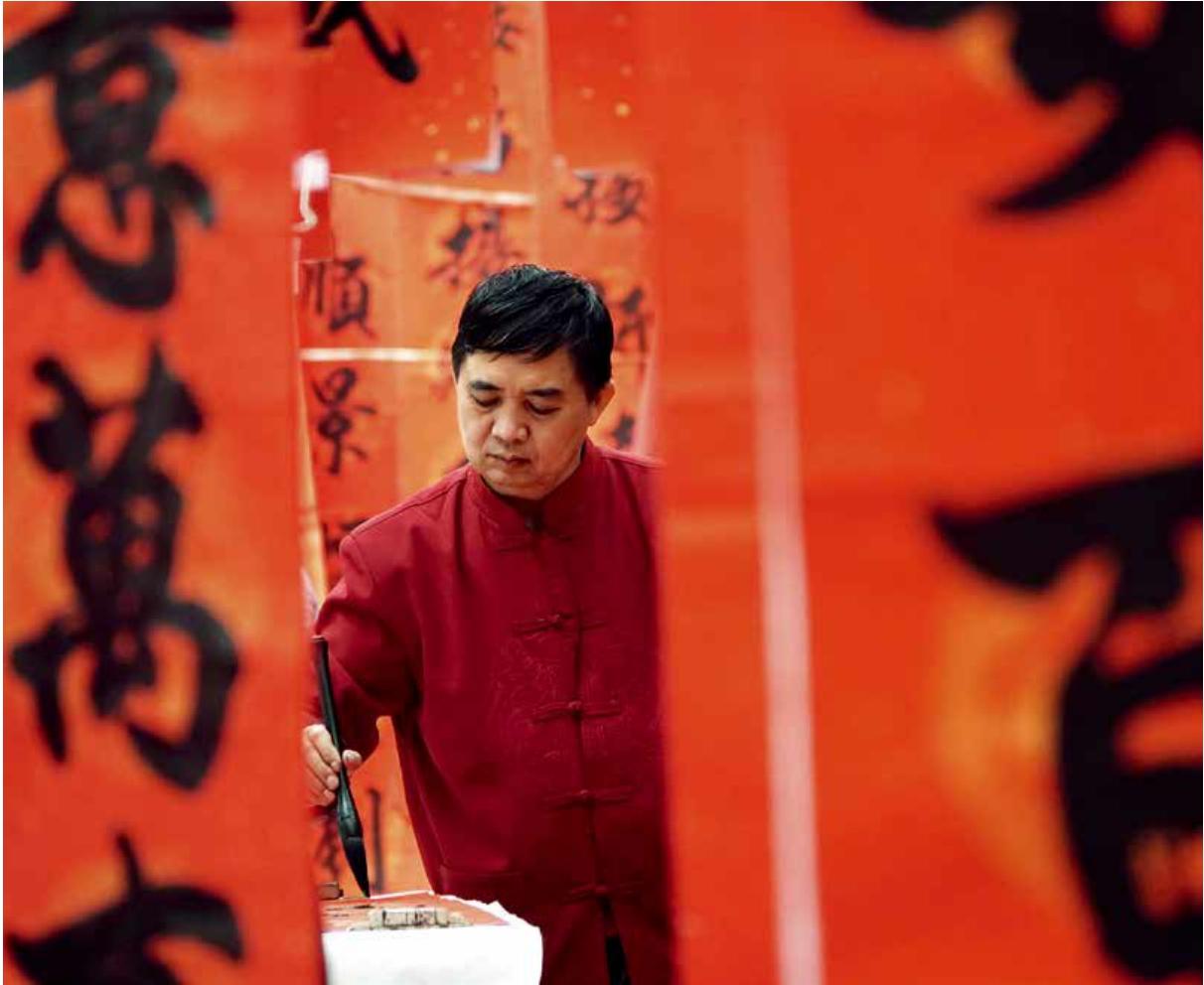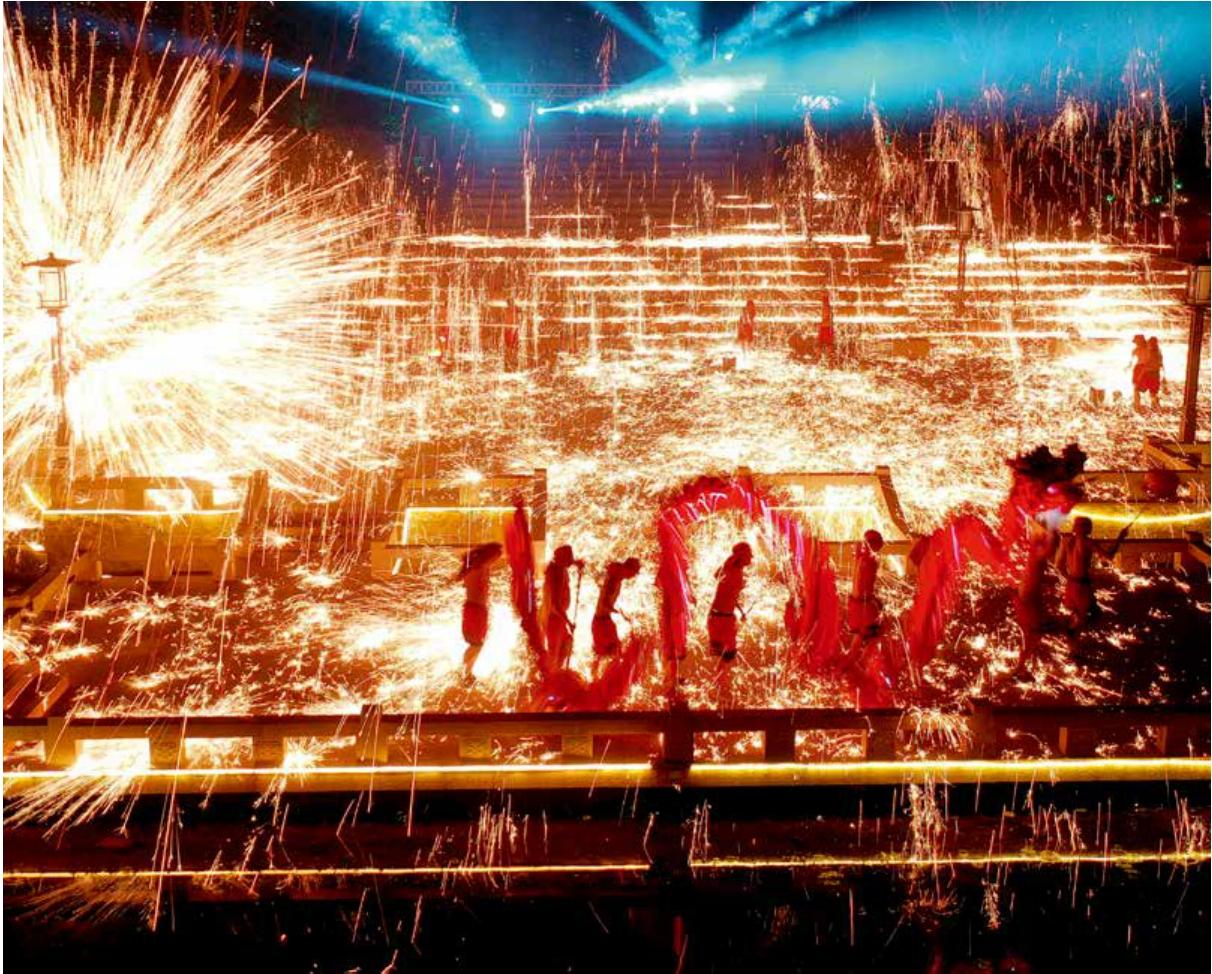Express
2021-04-06

December 26, 2020: A villager prepares red lanterns for the upcoming Spring Festival in Xubeizhang Village, Jiaozuo City, central Chinas Henan Province.
Spring Festival, also known as Chinese New Year, is the most jubilant time of the year for Chinese people. According to the Chinese lunar calendar, it marks the arrival of a new year with a farewell to cold and monotonous winter and a welcome to vigorous spring. Traditional celebration activities last about a month. Among them, hanging lanterns is an indispensable custom. For Chinese people, red lanterns symbolize family reunion and prosperity as well as happiness, completeness, and wealth. VCG
January 31, 2021: A folk calligrapher writes Spring Festival couplets at the local market in Nanning, capital of the Guangxi Zhuang Autonomous Region.
Hanging Spring Festival couplets and the Chinese character “Fu” (meaning “good fortune”) is an important custom for Spring Festival celebrations. They symbolize wishes for the new year with neat, concise words and serve as a prayer to ward off evils and promote good luck in the new year. People paste the paper scripts on the doors of their homes at the beginning of the Spring Festival holiday. VCG
January 14, 2021: A traditional craftsperson adjusts a puppet in Yangzhou City, Jiangsu Province.
Puppet shows are a traditional Spring Festival folk custom in Jiangsu Province that dates back more than 2,000 years. Performers use seven to 14 silk threads to control different parts of the puppets body while singing along. Most performances take place during Spring Festival and other traditional festivals as a way to ask the gods and their ancestors for blessings. In 2006, puppet shows became part of the first group of additions to Chinas National Intangible Cultural Heritage List. VCG
January 31, 2021: The “Bubu cake” made by local villagers in Yangxin County, Binzhou City, Shandong Province. The multi-layer cake is gradually superimposed into a “tower” shape, implying “rising step by step.”
Food is one of the most important festival totems for Chinese people. Their devotion to food can still be clearly seen in popular Spring Festival customs. Support from the global market and internet has helped food ingredients and dishes travel the world, enabling different regional tastes to fuse and integrate with each other and stir up new Chinese flavors on Spring Festival tables. VCG

January 31, 2021: Customers shop for orchids at the Huangtougang flower market in Fengtai District, Beijing.
A Spring Festival custom involves decorating rooms with various kinds of flowers to create a festive atmosphere. Such flowers are called nianxiao (meaning “New Years Eve”) flowers. Orchids, hollies, and white willows are all popular as nianxiao flowers. Chinas Guangdong Province has a tradition of celebrating the Lunar New Year by roaming flower markets. Visiting the annual Spring Festival flower market is the most popular traditional folk activity on the eve of Spring Festival. VCG
January 2, 2021: A “Huolong Ganghua” (dragon dance with steel flowers) performance is staged at the Jiuzhou Pool Scenic Area in Luoyang City, Henan Province.
Molten iron as hot as 1,500 degrees Celsius was thrown into the sky and splashed in all directions like fiery flowers. Shirtless dragon dancers shuttled under the “flowers” of molten iron. Chinese people emphasize good luck during celebrations of Spring Festival with hopes for a prosperous year. Huolong Ganghua has long been a traditional Spring Festival folk activity in Tongliang District, Chongqing. It is reputed “the best dragon dance in China” as one of Chinas first National Intangible Cultural Heritage items. IC